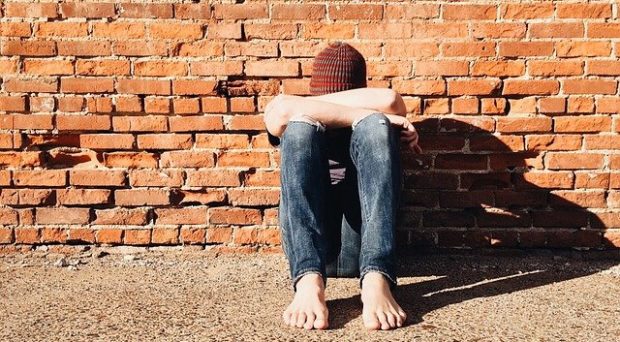
Self-harm is often the result of a complex interplay of genetic- biological, psychological and environmental factors. Bullying is one aspect that can increase the risk of self-harm. However not all adolescents who experience bullying harm themselves.
Bullies are also at risk
It is not only being the victim of bullying that is related to self-harm, but also being a bully aggressor. In fact, in our study we found that adolescents who are both bullies and are bullied by their peers (the bully-victims), were the group most vulnerable to self-harm. They were six times more likely to self-harm than adolescents who weren’t bullies or bullied.
It is possible that the “bully-victims” have the broadest range of adjustment problems, presenting difficulties common to both bullies and victims. An earlier study found that many of the bully-victims first have a history of being bullied, and then begin to bully peers later in adolescence. Thus, they suffer from both emotional and behavioral problems.
Why is there a relationship between self-harm and bullying behavior?
Both bullying victimization and self-harm are associated with emotional problems such as anxiety and depression. In our study we found that emotional problems and parental conflicts were important factors for the association between the bullied adolescents and self-harm, and between the bully-victims and self-harm.
Our study showed that school behavioral problems also accounted for some of the relationship between self-harm and the bullies, and self-harm and bully-victims. This confirms the idea that the act of bullying is part of a broader concept of conduct behavioral problems with aggressive and delinquent behaviors, school failure, and drop out.
Parental support and school well-being
School well-being (including support from teacher) was protective of self-harm for the bullies and the bully-victims
While we see that those who are bullied and/or bullies may be more likely to engage in self-harm, we know that not everyone who is bullied or bullies self-harms. We therefore investigated what might protect against self-harm amongst the bullies, bullied and bully-victims. We found that although parental support had a protective effect on self-harm among boys and girls in general, it was especially important for those who are bullied.
This shows that the willingness to talk to and seek help from parents during a difficult time like bullying, may protect against self-harm among adolescents.
We were surprised to also find that school well-being (including support from teacher) was protective of self-harm for the bullied and the bully-victims. Our result appears to be the first to investigate the buffering effect of school well-being on bullying behavior and self-harm among adolescents. This is an important result for the prevention of self-harm. Schools, parents, and health care professionals should be aware of the importance of school well-being for adolescents who are being bullied, in terms of identifying those at risk of self-harm.
How frequent is self-harm?
Our study showed that fifteen percent of participating adolescents reported engaging in self-harm during the last year. This is consistent with earlier studies finding the 12-month prevalence rate to be between 10 to 19% around the world.
Who participated in the study?
The data we used in this study was the “Ungdata” that is a cross-sectional, large, national survey, designed for adolescents. A total of 14 093 adolescents aged 12 to 19 years, from different parts of Norway, participated in the study; this was 87% of those invited to participate.
Our data was collected at one point in time and therefore we do not know if the bullying occurred prior to self-harm. However, previous longitudinal studies have shown that bullying increased the risk of self-harm and not the other way around.
How we measured self-harm and bulling
We measured self-harm by asking if the adolescents had tried to harm them self in the past 12 months. Bullied was measured by asking adolescent if they had been teased, threatened, or frozen out by other young people in school, free time, online, or on their mobile phones. Bullying other peers was measured by asking if they had taken part in teasing, threatening or freezing out out other young people at school, free time, online or by mobile phone. We created a new variable to measure those both being bullied and who bully others (the bully-victims), by combining the variables “Bullied” and “Bullying other peers”.
Conclusion
High levels of parental support and school well-being may buffer the harmful relationship between bullying behavior and self-harm
There is a strong link between bullying and self-harm. Interventions to address bullying may reduce self-harm. Our findings also suggest that high levels of parental support and school well-being may buffer the harmful relationship between bullying behavior and self-harm. Addressing these factors may be important in reducing the risk of self-harm among those experiencing bullying.
Comments